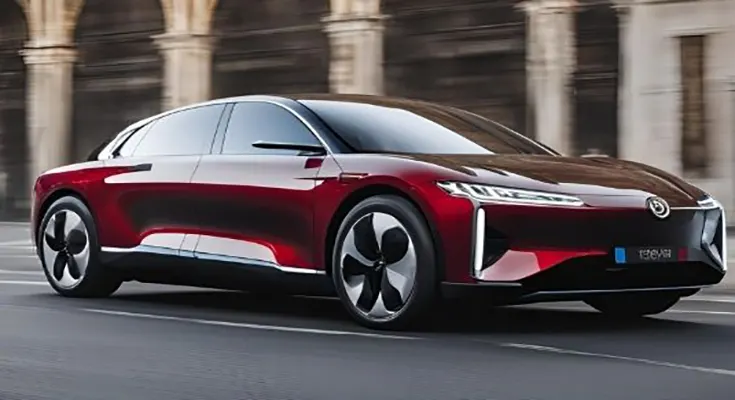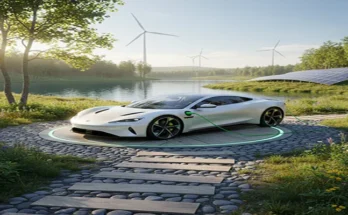As the automotive industry transitions toward more sustainable solutions, plug-in hybrid electric vehicles (PHEVs) have emerged as a compelling option for drivers seeking a blend of traditional and electric driving experiences. PHEVs combine the benefits of electric propulsion with the convenience of a gasoline engine, offering a flexible and practical approach to reducing emissions and improving fuel efficiency. This article explores the key features, advantages, and considerations of plug-in hybrid electric vehicles.
What Are Plug-In Hybrid Electric Vehicles?
Plug-in hybrid electric vehicles (PHEVs) are a type of hybrid vehicle that features both an electric motor and a conventional internal combustion engine (ICE). The electric motor is powered by a rechargeable battery, which can be charged from an external power source, such as a home charging station or public charging network. Unlike traditional hybrid vehicles, which rely on regenerative braking and the engine to charge the battery, PHEVs can be plugged in to recharge their battery, allowing for longer all-electric driving ranges.
Key components of a PHEV include:
- Electric Motor: Provides propulsion using electricity stored in the battery. PHEVs can operate in electric-only mode for short to moderate distances.
- Internal Combustion Engine (ICE): Works alongside the electric motor to extend driving range and provide additional power when needed.
- Battery Pack: Stores electrical energy that powers the electric motor. The battery can be recharged by plugging the vehicle into an external power source.
- Regenerative Braking System: Recovers energy during braking and converts it into electricity to recharge the battery.
Advantages of Plug-In Hybrid Electric Vehicles
Extended Driving Range
One of the primary advantages of PHEVs is their extended driving range compared to pure electric vehicles (EVs). With both an electric motor and a gasoline engine, PHEVs offer the flexibility to switch between electric and gasoline power, reducing range anxiety and making them suitable for longer trips. The combination of electric and gasoline power allows PHEVs to cover a broader range of distances without the need for frequent recharging.
Reduced Fuel Consumption
PHEVs significantly reduce fuel consumption compared to conventional gasoline vehicles. When operating in electric-only mode, PHEVs use no gasoline at all, resulting in zero tailpipe emissions for short trips. Even when the gasoline engine is engaged, PHEVs are more fuel-efficient than traditional vehicles because they can rely on electric power to supplement the engine’s performance.
Lower Emissions
By reducing reliance on gasoline and utilizing electric power, PHEVs help lower overall emissions. When driven primarily on electric power, PHEVs produce zero tailpipe emissions, contributing to improved air quality and reduced environmental impact. When operating in hybrid mode, PHEVs still emit fewer pollutants than conventional vehicles due to their higher fuel efficiency.
Government Incentives and Benefits
Many governments offer incentives and rebates to encourage the adoption of plug-in hybrid electric vehicles. These incentives can include tax credits, reduced registration fees, access to carpool lanes, and other benefits. These financial incentives can offset the higher initial cost of a PHEV and make them more appealing to consumers.
Flexibility and Convenience
PHEVs offer a unique blend of flexibility and convenience. Drivers can enjoy the benefits of electric driving for daily commutes and short trips while having the option to use gasoline for longer journeys. This versatility eliminates the need for frequent charging in scenarios where charging infrastructure is limited, making PHEVs a practical choice for many drivers.
Considerations and Challenges
Higher Initial Cost
The initial cost of a plug-in hybrid electric vehicle is typically higher than that of a conventional vehicle due to the additional technology and components required. However, this cost is often offset by lower operating expenses and government incentives. As PHEV technology continues to advance and become more mainstream, the cost is expected to decrease.
Battery and Charging Infrastructure
While PHEVs can be charged at home using a standard electrical outlet or dedicated charging station, the availability of charging infrastructure can impact convenience. Drivers who have access to home charging may benefit the most from PHEV ownership, while those in areas with limited charging options may need to rely more on the gasoline engine.
Battery Degradation
Like all batteries, the battery pack in a PHEV can experience degradation over time, leading to reduced electric-only range and performance. Regular maintenance and monitoring can help manage battery health, and many PHEVs come with warranties that cover the battery for a specified period.
The Future of Plug-In Hybrid Electric Vehicles
As automotive technology continues to evolve, plug-in hybrid electric vehicles are likely to play a significant role in the transition to a more sustainable transportation system. Advances in battery technology, improvements in charging infrastructure, and increasing consumer awareness are expected to drive the growth of the PHEV market.
Plug-in hybrid electric vehicles offer a practical and versatile solution for drivers seeking to reduce their environmental impact while maintaining the convenience of traditional gasoline-powered vehicles. With their extended driving range, reduced fuel consumption, and lower emissions, PHEVs represent a compelling option for those looking to embrace the benefits of electric driving without sacrificing flexibility. As technology and infrastructure continue to improve, PHEVs are poised to play a crucial role in shaping the future of sustainable transportation.





